Radiation is the transmission of energy through space in the form of a particle or wave. These can be generated by instruments or produced naturally. One of the most common uses of radiation is from radionuclides, or radioactive isotopes, that release radiation during decay, or degradation. These radioactive materials are often used for cancer therapy, research, and energy production.
The danger radiation exposure poses to humans can be quite significant, as it’s both invisible and the effects may not be immediately noticeable. Couple that with the growing number of nuclear power plants being built and the fact governments and corporations have not always being forthcoming about the details of radioactive release incidents (e.g. the Chernobyl nuclear disaster), having the ability to detect radiation levels may prove useful for detecting a radioactive release before the public is notified or verifying publicly-released dose information.
I spent a while working as an R1 university radiation safety specialist, where I acquired many great skills and experiences, which included handling radioisotopes, monitoring human exposure (dosimetry), overseeing the proper disposal of radioisotopes, and participating in first-responder training and exercises that prepared me and my team in the event of a radiological release or an incident with a radiological dispersal device (dirty bomb). These experiences led me to appreciate the power of radiation and the risks associated with it.
Since the Fukushima radiation release, many hobbyists began implementing radiation monitoring systems to track the global spread of radiation that emanated from Japan. Some of these projects lead to public monitoring programs that still operate today.
Device Development
Below is how I implemented a remote radiation monitor that relays radiation levels to two public radiation maps, Safecast and Geiger Counter World Map, for a total cost of approximately $150 (minus the cost of the LoRaWAN gateway). More details can be found here if you would like to implement your own radiation monitor.
My requirements for the monitoring system:
- Battery-powered
- Low power operation
- Data transmission from a remote location
- Small low-power display in case power/internet is not available
- Automatic upload to public radiation maps
I chose the Moteino Mega with the RMF95 LoRaWAN transceiver as the development platform, and the MightyOhm Geiger Counter 1.0 with a SBM-20 Geiger-Müller tube for the sensor. A battery pack with three AA batteries was used to power the entire system, and a Pelican Case (model 1050) was used to house all the components so it could be safely deployed outside. The serial transmit pin of the Geiger counter was connected to the serial receive pin of the Moteino Mega to receive counts per minute (CPM) and microSieverts per hour (μSv/hr) measurements as a string and parse them into number values. A pin of the Moteino Mega was used to power the Geiger counter. Since the Geiger counter only draws 10 mA, this could be wired directly to the pin, as this amount doesn’t exceed the current rating of the pin. This allows the Moteino Mega to depower the Geiger counter and remain in a low-power sleep mode until the next measurement and LoRaWAN transmission. An I2C 128×64 OLED display was added for the ability to read the radiation level from the device. A LoRaWAN gateway I built previously was used to receive transmissions from the Moteino Mega.
Live Radiation Data
View the live radiation levels recorded by this device:
Safecast measurement (user 1920)
GMC Map measurements (user 22044260632)

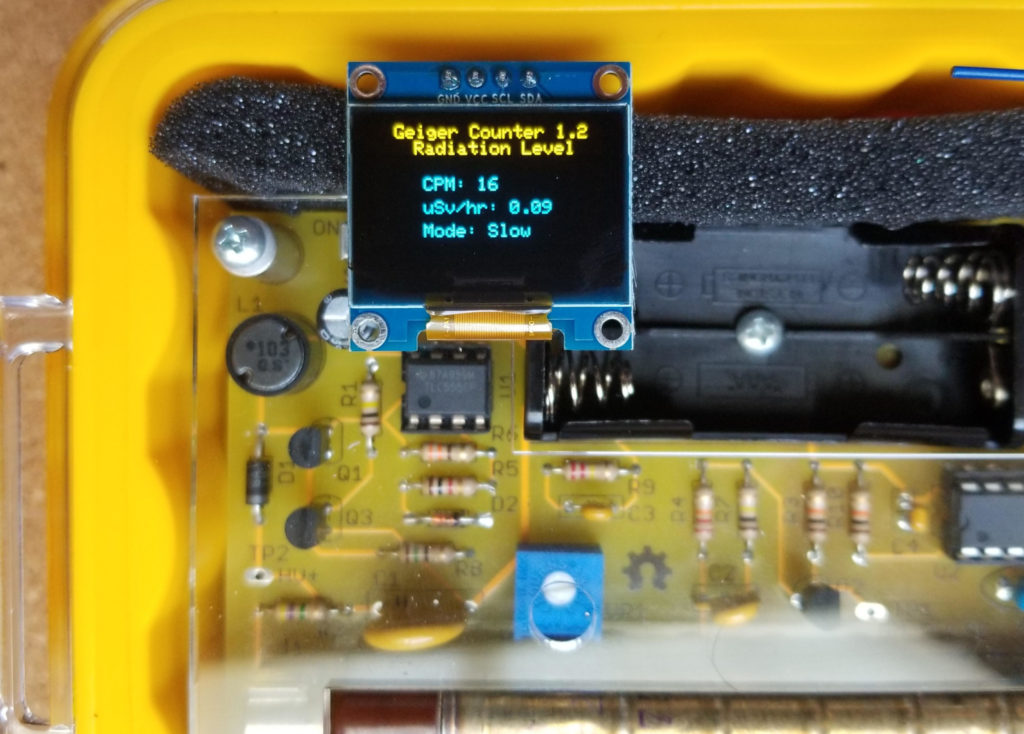
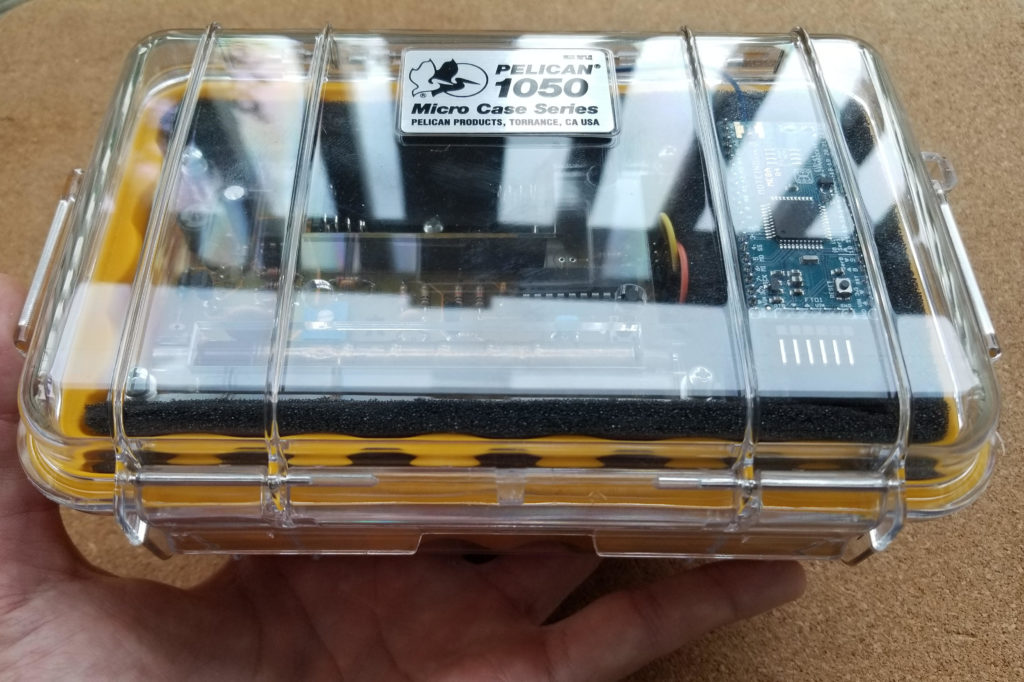
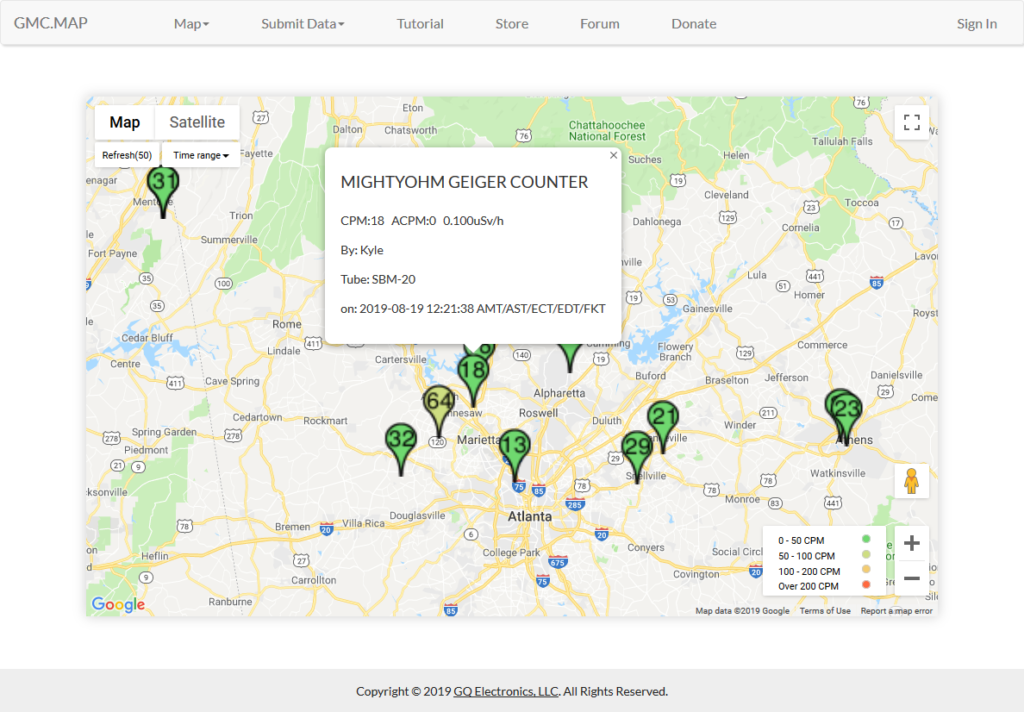
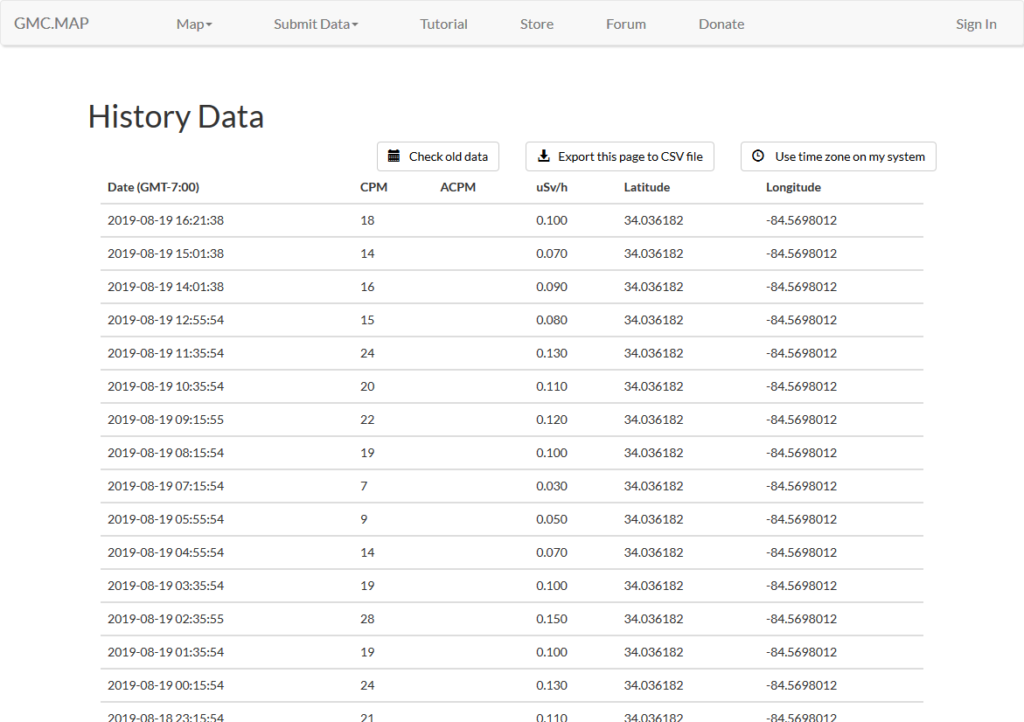

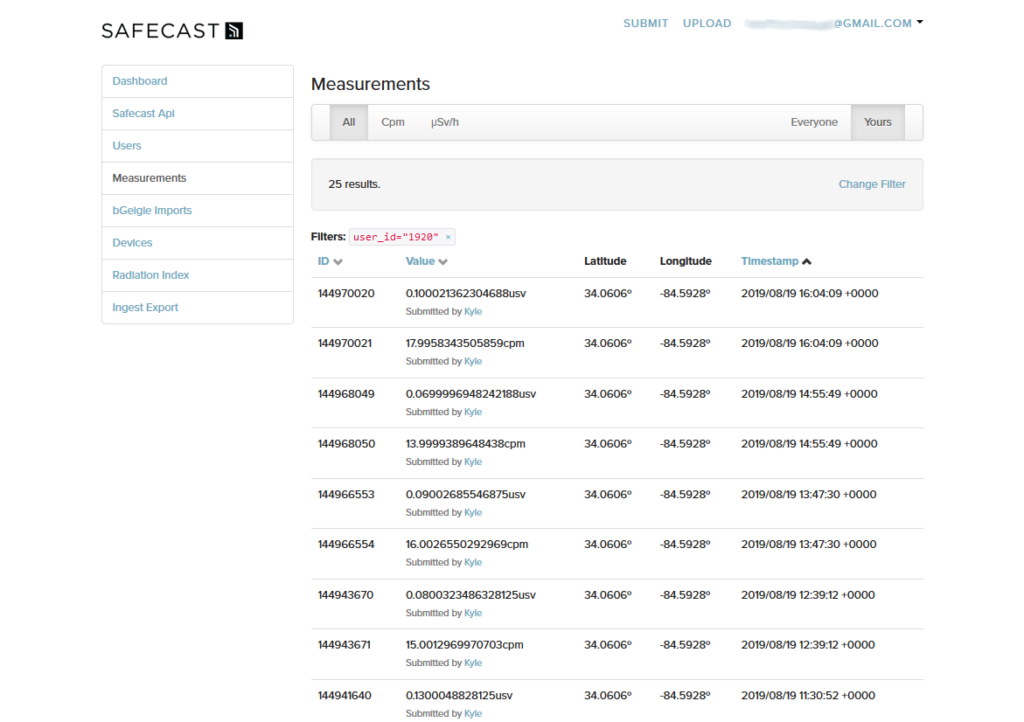

I’ve had one of these MO Geiger counters for a couple of years. Was trying to get the ESP-32 board to play nice with it, but I like this idea better. Excellent use of LoraWAN.
I’ve experimented with a few LoRaWAN boards now: TTGO T-Beam, Talk2 Whisper, LoRa32u4 II, and Moteino Mega.
The T-Beam is great to develop on because it has a lot of communication capabilities (GPS, wifi, bluetooth, lorawan) and a lot of program memory (4MB!). The Moteino Mega is by far the best choice of them all for remote deployment, as it has the lowest power draw during sleep and has the largest program space of the 3 minimal boards. I had issues with running out of space on the Talk2 Whisper and LoRa32u4 II using even just one sensor library and a stripped down version of The Things Network library. I’ve pulled a lot of hair trying to reduce the size of my sketches to fit, and even when they did fit I would have other issues due to the constricted space for variables. Moving to the Moteino Mega was a game-changer, and I haven’t had to worry about sketch size yet.
Does it have an alarm setting, if above a certain level it sets an alarm or texts you?
It does. If the average CPM rises above 30, I’ll receive an email alert.
how did you manage to send 9600 baud, or 9600 bits/s with LoRa ? it’s more than 960 characters.
what is the distance between your counter Geiger and your gateway ?
The payload only contains the radiation level in CPM and uSv/hr.